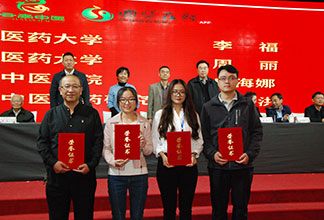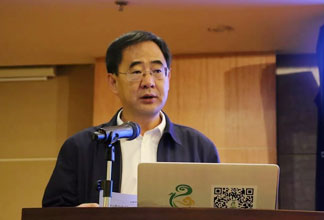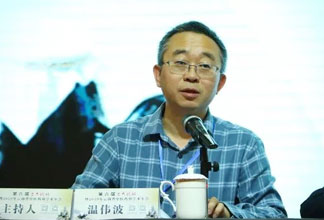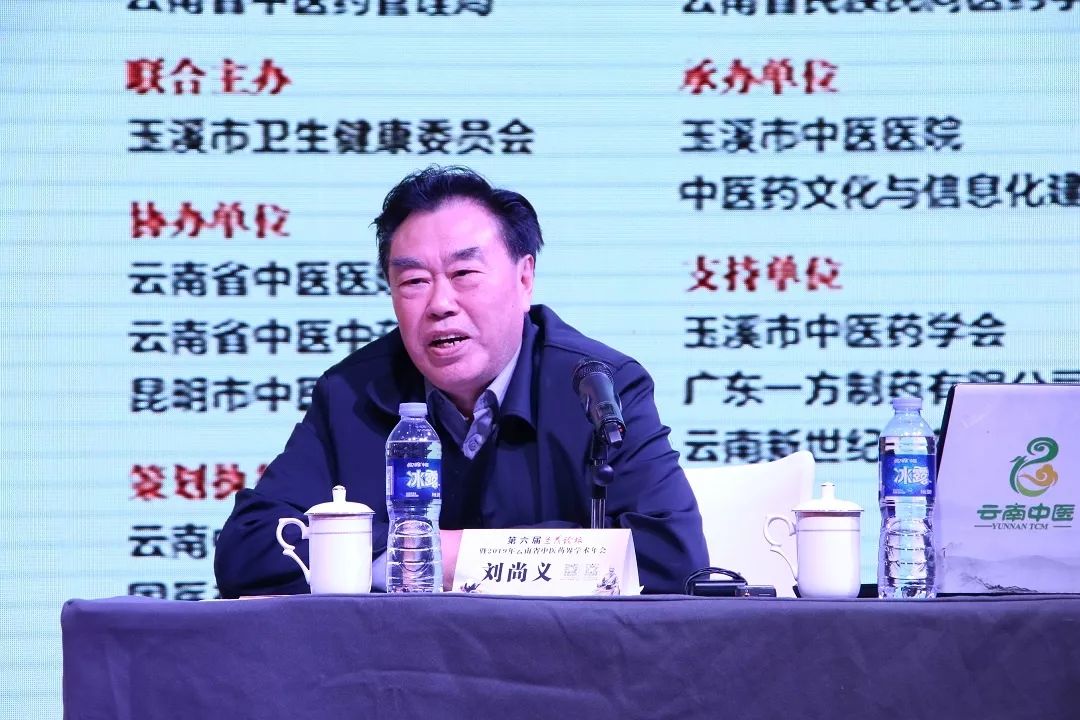张晓宇1 王兴强2 肖勇洪2 王特1 张薇1 李兆福1
(本论文荣获“第六届兰茂论坛”优秀论文三等奖)
摘 要:目的 分析近19年来针刺治疗痛风性关节炎的临床文献,探析针刺治疗本病的基本规律。方法 以“痛风or痛风性关节炎”and“针灸or针刺”and“临床or疗效”和“gout and acupuncture or acupuncture therapy”为检索词,在中国知网全文数据库(CNKI)、万方学术期刊全文数据库、维普全文期刊数据库、PubMed进行相关检索。将所纳入文献中的穴位及包含的补泻方法用Microsoft Excel 2007整理,制作资料提取表,进行频数及百分数的统计描述,用R语言进行关联规则分析和聚类规则分析。结果 共检索获得中英文文献176篇,经筛选共纳入文献66篇,腧穴88个,腧穴总使用频次696次。腧穴归经主要以脾经、胃经、大肠经、胆经、肝经、三焦经、膀胱经、肾经腧穴为主。出现频次最多的穴位依次是:三阴交、足三里、曲池、太冲、阴陵泉、血海、合谷、阳陵泉、犊鼻、太溪等。针刺补泻手法上,毫针提插捻转泻法运用最多,补法运用相对较少。三棱针、梅花针、火针等刺血疗法对缓解痛风性关节炎急性发作疼痛有重要作用。结论 针刺治疗痛风性关节炎注重近部选穴和循经选穴,多以病变部位及脾经、胃经、大肠经等经穴为主。三阴交、足三里、阴陵泉、太冲、合谷、曲池、血海可作为痛风性关节炎的基本取穴,针刺补泻主要以泻法为主。
关键词:痛风性关节炎;针刺;选穴规律
中图分类号:R245.3
Analysis of the Regularities of Acupuncture Treatment of Gouty Arthritis Based on Data Mining
ZHANG Xiao-yu1,WANG Xing-qiang2,XIAO Yonghong2 ,WANG Te1,LI Zhao-fu1
(1.Yunnan University of Traditional Chinese Medicine ,Kunming 650500,China;2.First Affiated Hospital of Yunnan University of Traditional Chinese Medicine ,Kunming 650021,China)
Abstract:Objective To analyze the basic regularities of acupuncture treatment of gouty arthritis from the clinical literatures which published in the past 19 years. Methods “gout” or “gouty arthritis”, and “acupuncture” or “acupuncture and moxibustion” and “clinical” or “effect” were used as the key words in the Chinese HowNet full-text database (CNKI), Wanfang academic journal full-text database, VIP journals database and “gout and acupuncture or acupuncture therapy” in PubMed to retrieve the relevant literatures. Then the related acupoints and reinforcing-reducing methods will be entered in Microsoft Excel 2007 software to make percentage and frequency statistical descriptions. Moreover, The R Programming language is used to analyze association rules and analyze clustering rules. Results A total of 176 Chinese and English literatures were retrieved,among them,66 papers met the inclusive criteria, and 88 acupoints involved with a total frequency of all points of 696. These acupoints are mainly belongs to the spleen meridian of foot-taiyin,the stomach meridian of foot-yangming, the large intestine meridian of hand-yangming, the gallbladder meridian of foot-shaoyang, the liver meridian of foot-jueyin, the triple energizer meridian of hand-shaoyang, the bladder meridian of foot-taiyang and the kidney meridian of foot-shaoyin. The most commonly used acupoints are Sanyinjiao, Zusanli, Quchi, Taichong, Yinlingquan, Xuehai, Hegu, Yanglingquan, Dubi, Taixi and so on. In the needling techniques aspect, lifting thrusting method and twisting reducing method is most frequently used and reinforcing method using relatively less. Furthermore, Pricking blood therapy such as three edged needle, plum blossom needle and fire needle has a good curative effect on the treatment of acute gouty arthritis pain. Conclusion For acupuncture treatment of gouty arthritis, selection of local and along-meridian points were commonly used, and acupoints are mainly distributed near the lesion joints. Acupoints of the lesion sites and points of spleen, stomach and large intestine meridians were mostly selected.Furthermore, Sanyinjiao, Zusanli, Yinlingquan, Taichong, Hegu, Quchi and Xuehai can be chosen for the basic condition of gouty arthritis. The needling techniques mostly used are according to the reducing method.
Keywords: Gouty arthritis; Acupuncture;Acupoint selection regularities
痛风性关节炎是由于体内嘌呤代谢紊乱及(或)血尿酸排泄障碍引发的一种代谢性疾病,尿酸盐结晶在关节腔及其周围组织沉积为其发病主要病因。据不完全统计,我国痛风性关节炎患病率约为0.34%-2.84%,且发病率近年来不断增高[1-2],可能与人们生活水平提高后酒食不节,嗜食肥甘厚味相关。痛风性关节炎不仅造成骨关节、肌肉、肌腱等的损害,还可进一步累及肾脏、心脑血管、内分泌系统[3],并且其发病常与糖脂代谢紊乱、肥胖、高血压、血管硬化等相伴随[4-5]。西医治疗本病多采用非甾体类抗炎药、糖皮质激素、秋水仙碱、降尿酸药,能取得一定疗效,但长期应用后不良反应明显。中医针灸对于本病的治疗有较好的效果,但在选穴配伍及补泻手法上尚未形成治疗规范。本文通过整理近年来相关期刊发表的论文,对其选穴规律、补泻方法进行归纳分析,以期发现其潜在规律,得出基本选穴,为针灸临床提供参考。
1 资料与方法
1.1 文献来源
本研究所检索的数据库为中国知网全文数据库(CNKI)、万方学术期刊全文数据库、维普全文期刊数据库、PubMed数据库。检索年限为2000年1月—2019年1月。检索关键词为“ 痛风or痛风性关节炎”and“针灸or针刺”and“临床or疗效”和“gout and acupuncture or acupuncture therapy。”
1.2 文献纳入标准
(1)所选病例为西医诊断标准明确诊断为痛风性关节炎者;(2)据中医或西医疗效评价标准针刺治疗有效者;(3)治疗方法以针刺治疗为主,可结合灸法、中药、刺络拔罐、温针、火针等综合治疗;(4)具有针刺穴位及补泻方法。
1.3 文献排除标准
(1)文献综述及评述性文献、个案验案报道;(2)动物实验研究文献;(3)重复发表的论文计为1篇(选取首次见刊的为准);(4)同时采用针刺、中药、西药三种方法结合者。
1.4 文献处理
(1)两位以上研究者分别独立阅读所获文献,排除明显不符合纳入标准的文献,对有分歧的文献通过全体研究人员讨论确定是否纳入;(2)数据录入,在阅读全文的基础上纳入符合标准的文献,运用Microsoft Excel 2007提取整理文献资料。按照《腧穴名称与定位》[6]及《刺法灸法学》[7]将数据规范后录入,录入内容包括作者、刊名、具体治疗方法、病例数、补泻手法、主穴、配穴、辅助治法等;(3)数据处理,对所获数据进行频数及百分数分析,并运用R语言对频次≥3的穴位进行关联规则分析和聚类分析。
2 结果
2.1 描述性结果
2.1.1 文献检索结果
按照上述检索方法,共检索获得中文文献152篇,根据排除标准排除文献86篇,最终有效文献为65篇。英文文献24篇,但大多数是英文数据库上收录的中文文献,经筛选有1篇英文文献纳入。其中单用针刺者23篇,加用艾灸者6篇,针刺合并中药者21篇,针刺合并西药者4篇,针刺合并中药外敷者5篇,针刺加拔罐者5篇,针刺合并穴位注射、封闭、红外线照射者各1篇。所涉及的针具有毫针(62)、三棱针(15)、火针(4)、梅花针(7)。
2.1.2 主穴使用频率分析
66篇文献中共采用穴位88个,总频次696次,使用频次大于5次的穴位有38个,从高到低依次为三阴交、足三里、曲池、太冲、阴陵泉、血海、合谷、阳陵泉、犊鼻、太溪等。
具体见表1。另外,阿是穴共提及38次,因部位较多,未列于表中。
表1 腧穴使用频次>5次的检索结果
|
穴位
|
频次
|
使用频率(%)
|
穴位
|
频次
|
使用频率(%)
|
|
三阴交
|
41
|
46.60
|
太白
|
17
|
19.32
|
|
足三里
|
40
|
45.45
|
内膝眼
|
16
|
18.18
|
|
曲池
|
36
|
40.91
|
阳溪
|
15
|
17.05
|
|
太冲
|
34
|
38.64
|
内庭
|
14
|
15.91
|
|
阴陵泉
|
33
|
37.50
|
照海
|
13
|
14.77
|
|
合谷
|
31
|
35.23
|
隐白
|
12
|
13.64
|
|
血海
|
26
|
29.55
|
大都
|
11
|
12.50
|
|
阳陵泉
|
25
|
28.41
|
梁丘
|
11
|
12.50
|
|
犊鼻
|
24
|
27.27
|
行间
|
10
|
11.36
|
|
太溪
|
20
|
22.73
|
申脉
|
10
|
11.36
|
|
阳池
|
20
|
22.73
|
大椎
|
9
|
10.23
|
|
外关
|
19
|
21.59
|
商丘
|
8
|
9.10
|
|
昆仑
|
18
|
20.45
|
腕骨
|
8
|
9.10
|
|
丰隆
|
17
|
19.32
|
悬钟
|
8
|
9.10
|
|
丘墟
|
17
|
19.32
|
解溪
|
7
|
7.95
|



